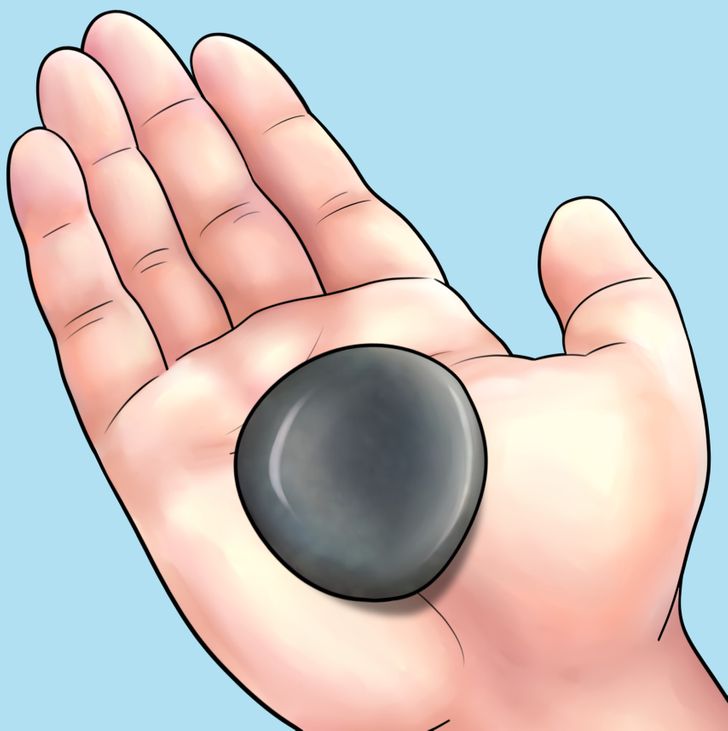Interesting. Handheld bidet is (or at least, should be) a modern solution to global warming. Can't believe people still use tissues; doesn't even clean properly.
What People Did Before Toilet Paper Existed

China was mass-producing toilet paper in the fourteenth century but it only appeared in the Western world in the mid-1800s. However, it took some time and effort to make the revolutionary product popular. People preferred to adhere to traditional methods and resorted to all kinds of unexpected items to maintain their bathroom hygiene.
Bright Side presents to you a list of unlikely things that were (and sometimes still are) used instead of toilet paper.
12. Corncobs

Native Americans and colonists in the 1700s used dry emptied corncobs for their hygienic needs. This can be explained by the fact that corn was in abundance and had soft, absorbent properties. It’s probably not as advanced as soft paper, but still, it’s safer and more comfortable than other things.
11. Snow
People living in colder regions (like the Inuits) used snow as a cleansing material after defecation. The disadvantage of this method is obvious (the cold). However, the body can get accustomed to it if snow is used in this manner on a daily basis. This method is surprisingly one of the most sanitary, despite it being seemingly exotic.
10. Stones

Wiping with stones is one of the oldest bathroom techniques. In ancient times, people opted for what they could find freely and easily around them, including stones and other natural materials. It is not, of course, the most comfortable method from a modern point of view. But it was probably a good a solution centuries ago when nothing else was handy.
9. Wooden sticks
Around 2,000 years ago, people in Ancient China used special hygiene sticks cut from bamboo and other wood that resembled spatulas. They were traditionally called salaka, cachou, or chugi. The ends of the instruments were wrapped in cloth, presumably making it more comfortable to use for intimate matters.
8. Pottery shards
People in Ancient Greece used “pessoi” or small ceramic pieces. Pessoi can be found in ancient latrines all around the Mediterranian. The pieces were 3 cm to 11 cm in diameter and were purposefully re-cut from old broken ceramics to have smoother angles. There might have even been a Greek proverb referring to this practice: “Three stones are enough to wipe.”
7. Sponge on a stick
People in Ancient Rome had an alternative to modern-day toilet paper in the form of a tersoruim, a sponge mounted on a stick. The tersorium is even mentioned in Seneca’s writings, but how exactly it was used is still up for debate. Most likely, it was communal and was cleaned after use by way of vinegar or salt water and then reused. There is a probability, however, that it was used as a toilet brush, not as toilet paper.
6. Shells
It sounds unbelievable, but people living on islands and in the coastal areas used mussel shells to clean after defecating. If shells were unavailable, islanders used coconut husks. It seems to be rather uncomfortable because of the toughness and sharp edges, but our ancestors didn’t have much of a choice.
5. Newspapers and magazines
The new era of “bathroom routines” began in the eighteenth century with the arrival of newspapers and magazines. They can probably be considered the closest predecessor of actual toilet paper. In the US there were even local favorites in the form of the Farmer’s Almanac and the popular Sears catalog. The almanac was so commonly used that publishers started pre-drilling a hole in the periodical to make it easier to hang.
4. Rags
In early America and Europe, people used old rags for wiping themselves after going to the bathroom. Such rags were washable and reusable, but eventually, they ended up in the sewers. Softness of the material is one of the advantages of this method. However, the idea of rags being reusable is questionable because of sanitary issues.
3. Grass
It’s only logical that for centuries people used natural materials for hygiene. And what can be better for this purpose than plants? They can be found nearly everywhere, they’re relatively soft and safe to use, and they’re easy to dispose of. It’s one of the most eco-friendly ways to take care of your bathroom needs.
2. Water
In India, Africa, and Arab countries people traditionally used their left hand and a bit of water to clean their behinds. The hand was cleaned after the procedure. This method is still in use in some parts of the globe. Historians suppose that this technique is the reason why people shake with their right hand.
1. Sand or dirt

Different climatic conditions dictated various approaches to hygiene. In arid places where no other things could be found, people used handfuls of sand or dirt to clean their behinds. This is probably one of the least comfortable and hygienic practices for contemporary people. Nevertheless, our ancestors had to take advantage of the resources they had available.
Which method seems the most peculiar to you? Which one would you use under no circumstances?
Comments
I honestly don't understand how someone would be comfortable using tissue paper to clean up. The thought alone messes with my head?.
Water is the best way to get clean & fresh. We still get cleaned this way. The best way for babies & adults. Quick, Easy, Economical, Water is always there.
Related Reads
What People Who Gave Their Names to 10 Famous Brands Look Like

14 Unresolved Nanny Stories That Keep Us Guessing

12 Stories So Wild They Might Break the Internet

I Absolutely Refuse to Leave Inheritance to a Family That Treats Me Like an ATM

My Boss Refused to Give Me a Day Off—He Wasn’t Ready for My Payback

I Share My Husband With His Ex-Family—I’m Done

I Chose My Daughter Over My Stepson — I’m a Father First, Stepfather Second

10 True Stories With an Ending So Twisted They Deserve an Oscar

14 Mother-in-Law Moments That Became a Legendary Family Story

16 Times a Marriage Proposal Went Hilariously Off-Script

15+ Stories That Prove First Love Stays With Us Forever

I Refused to Beg My DIL for Forgiveness—Then Suddenly She Needed Me









